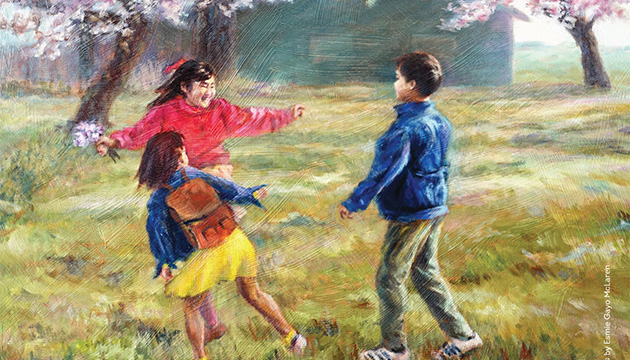As the world warms up with the activities of its more than seven billion global population, extreme weather events are becoming more frequent and intense: sea levels are rising, prolonged droughts are putting pressure on food crops, and many animal and plant species are being driven to extinction. Since climate change is primarily man-made, we as individuals can do something to resolve a problem of this scale and severity.
Climate change occurs when changes in the Earth's climate system result in new weather patterns that last for at least a few decades, and maybe for millions of years. Other tell-tale signs of climate change, aside from sea level rise, are ocean heat and acidification and sea-ice and glacier melt and extreme weather that left a trail of devastation on all continents, according to the World Meteorological Organization (WMO).
Seven of the 10 deadly storms in the Philippines resulted in more than 1,000 casualties. Five of the 10occurred between 2006 -2019. But the deadliest storm on record in the Philippines is Typhoon Haiyan in 2013, known locally as Typhoon Yolanda, which was responsible for more than 6,300 lost lives, over four million displaced citizens, and $2 billion in damages.
About 20 tropical cyclones enter Philippine waters each year, with eight or nine making landfall. Over the past decade, these tropical storms have struck the nation more often and more severely, most scientists believe, because of climate change.
The Global Climate Risk Index 2015 listed the Philippines as the number one most affected country by climate change, using 2013’s data. Sea-level rise, a detrimental effect of climate change can be exacerbated by the storm surge from tropical storms. Sea levels in the Philippines are rising at about twice the global average. When especially strong storms like Typhoon Haiyan make landfall, the higher sea level contributes to storm surge that can rise upwards of 15–20 feet, displacing thousands or even millions of citizens in coastal communities.
Globally the long-term warming trend has continued in 2018 and 2019, with the average global temperature set to be the fourth highest on record. The 20 warmest years on record have been in the past 22 years, with the top four in the past four years, according to WMO.
|
|
The Intergovernmental Panel on Climate Change (IPCC) report on Global Warming of 1.5°C said that this target was physically possible but would require unprecedented changes in our lifestyle, energy and transport systems to achieve. It showed how keeping temperature increases below 2°C would reduce the risks to human well-being, ecosystems and sustainable development.
Heat waves, droughts, wildfires and floodings
According to the IPCC, human-caused global warming is driving climate changes that impact both human and natural systems on all continents and across the oceans. Human-caused global warming results from the increased use of fossil fuels in transportation, manufacturing and communications.
Internet-induced climate change is the newest contributor to human-induced climate change. Some of the impacts include the altering of ecosystems (with a few extinctions), threat to food production and water supplies due to extreme weather, and the dislocation of human communities due to sea level rise and other climate factors.
Carbon dioxide (CO2) is the climate’s worst enemy. It is released when oil, coal, and other fossil fuels are burned for energy—the energy we use to power our homes, cars, and smart phones. By using less of it, we can curb our own contribution to climate change while also saving money.
Large parts of Europe including France, United Kingdom and Ireland, Germany, Spain, Portugal and Greece experienced exceptional heat and drought through the late spring and summer of 2018 and 2019, leading to wildfires in Scandinavia and a number of deaths. Major wildfires affected Athens (Greece) and the Arctic regions like Greenland and Siberia. British Columbia in Canada broke its record for the most area burned in a wildfire season for the second successive year. California suffered devastating wildfires, with November’s Camp Fire being the deadliest fire in over a century for the U.S.A.
The spring and summer of 2019 brought unprecedented tornadoes to Ottawa, flooding in Quebec, earthquakes in northern B.C. and southern California while hailstones flooded a city in Mexico, typhoons ravaged cities and coastal areas in Asia while high temperatures, humidity thunderstorms, lightning and hurricanes rampaged across the United States. This summer wildfires raged across the Amazon rainforest in Brazil, so widespread that it was visible from space.
Exposure of agriculture sectors to climate extremes is threatening to reverse gains made in ending malnutrition. New evidence shows a rise in world hunger after a prolonged decline. In 2017, the number of undernourished people was estimated to have increased to 821 million, according to The State of Food Security and Nutrition in the World 2018, as reported by the FAO, WFP, the International Fund for Agricultural Development, the UN Children’s Fund and the World Health Organization. Africa is the region where climate events had the biggest impact on acute food insecurity and malnutrition in 2017, affecting 59 million people in 24 countries and requiring urgent humanitarian action.
Devastating Effects of Climate Change on Planet Earth are Real
There are people who deny that climate change is caused by human activities. They claim that increased hurricane activity and other extreme weather events are a result of natural weather patterns, not human-caused climate change. However, a 2013 review of over 11,000 peer-reviewed studies published from 1991-2011 found that 97% of the studies expressing a position on the issue endorsed the idea that humans are causing global warming. [1]
Whether climate change is caused by humans or natural weather patterns or a combination of both, the fact remains that there is now less snow in places where there used to be lots and more heat where there used to be less. Rising sea levels, stronger storms, and shifting habitats for wildlife and people are happening everywhere. The decision to mitigate this unprecedented climate change is within everybody’s reach – like driving and flying less, switching to a ‘green’ energy provider and changing what we eat and buy daily.Please spread the word.
By Eleanor R. Laquian for
The CFNet Editorial Board
Contact us at










